Persian Halva is a sweet dense paste made out of toasted wheat flour, oil or butter, mixed with a sugar, saffron, cardamom and rosewater syrup that gives it a pleasant taste and smell.
Halva is originally an Arabic dessert literally meaning “sweet”, but it has found its way to many ethnicities such as Indian, Persian, Greek, Jewish and Turkish community. It is prepared and served differently in each and every region. However, Halva, in general, can be divided into two groups:
- Flour-based Halva
This type of halva is slightly gelatinous made primarily by frying grain flour (such as semolina) in butter and then cooking it with a sugary syrup.
- Nut butter-based Halva:
This type of halva is crumbly and usually made primarily from sesame paste (Tahini) or other nut butter and sugar.
What is Persian Halva?
Iranian Halva is very different from the Middle Eastern or Indian version. It is usually referred to a related confection made from wheat or rice flour and butter and flavoured with saffron and rose water, and the final product can vary from a light golden yellow to a dark brown colour.
Halva is cooked and offered to visitors and neighbours by relatives of the deceased to commemorate those who have passed away. Even though this delicious dish is mainly associated with unfortunate circumstances such as funerals, it is also one the most popular dessert during Ramadan (fasting) month.
Each region of Iran usually has its own recipe
There are also two types of Halwa in Iran;
– Traditional/moist – made by making a roux with flour and oil and then cooked with a sweet syrup until it has a soft, play-dough consistency that is very agreeable to the palate. Usually garnished with slivered almonds or pistachios. Here is a list of common types of traditional Halva:
- Wheat Halva
- Carrot Halva
- Beetroot Halva
- Tar Halva
- Milk Halva
-Modern/dry – it is made without the syrup by mixing toasted flour, butter, powdered sugar, grinned nuts and spices, has a delicate airy texture that crumbles and instantly melts in your mouth. This type is mostly served with Persian tea in the afternoon on also used as welcome sweets in parties. The most common modern Halvas are:
- Chickpea Halva
- Ginger Halva
- Pistachio Halva
- Walnut Halva
- Rose Halva
How to cook the perfect Persian Halva
All you need is wheat flavour, oil and butter, sugar, water, saffron and rose water.
Syrup:
The first thing to do is making the syrup, by placing sugar and water in a saucepan and bring it to a boil. Then removing from heat and adding rose water, ground cardamom and bloomed saffron. As simple as that, set aside to cool down.
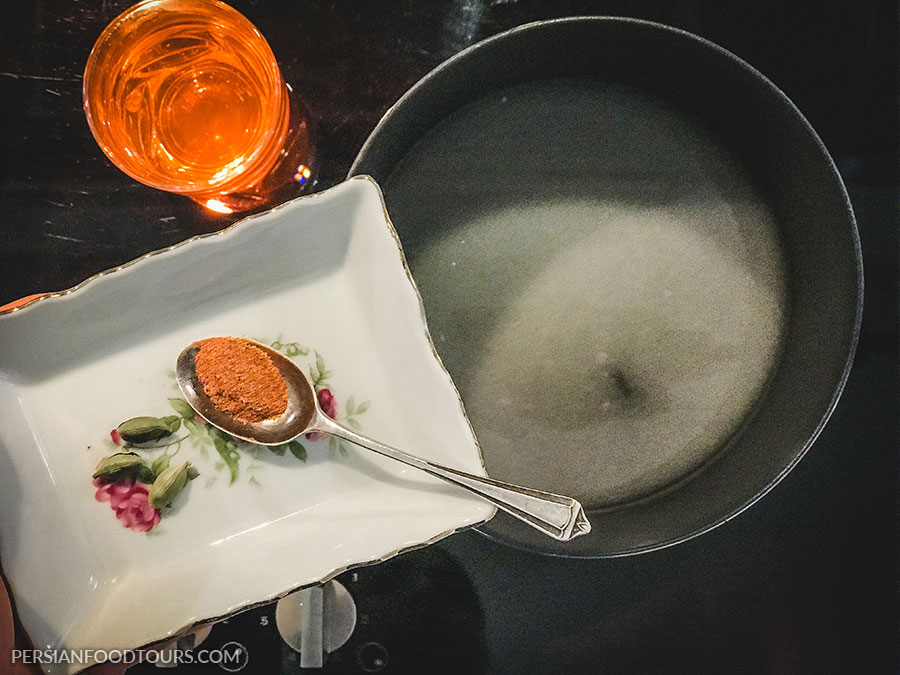
Halva:
No matter what type of Halva you are preparing always sift the flour using a fine sieve. Then cook and constantly stir in a pot over medium heat without any oil, until it’s toasted and aromatic without changing its colour.
One thing you shouldn’t forget is to sift the flour again to get rid off any small lamps which may appear during the toasting, as it absorbs moisture and sticks together.
It’s time to add oil and butter; Oil in there to keep the Halva texture soft and butter for the fragrance and its deliciousness.
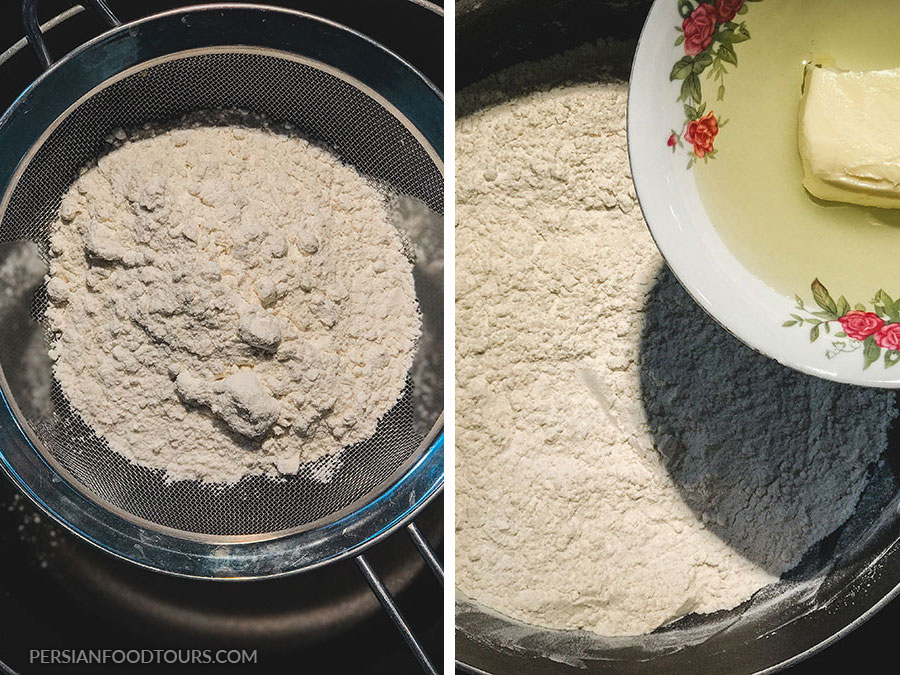
Stir in both with the hot flour over medium-low heat until the flour is all moistened and resembles a paste. Let the flour slightly brown on low heat making sure that you are constantly stirring so that it won’t burn. If you notice the colour is getting darker remove from the heat.
* Think of this part of this recipe as the first stage of making Bechamel sauce, better known as Roux.
Gradually pour the syrup into the pot over the hot paste ladle by ladle, you may need a hand to help you as it’s needed to stir and mix the hot paste and syrup constantly until the syrup is fully absorbed and forms a smooth mixture.
*When adding the syrup should be lukewarm.
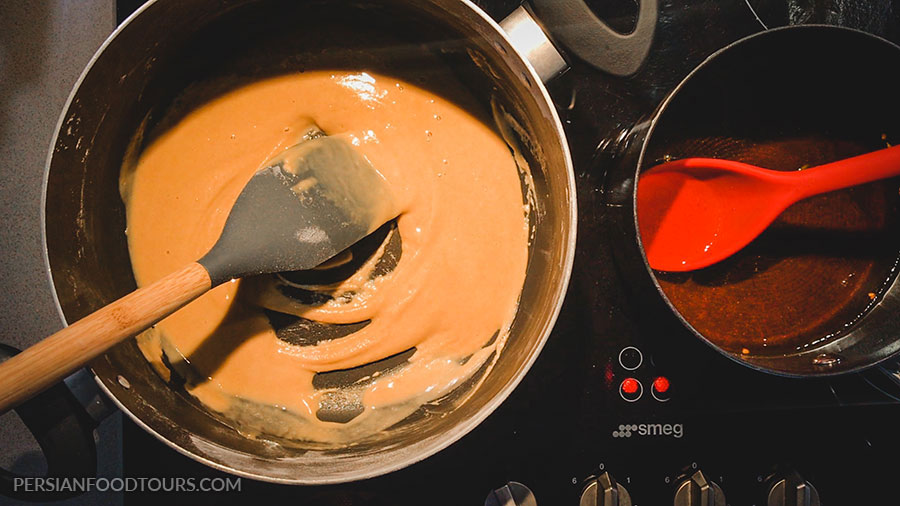
In the final stage after the Halva mixture is well blended, once again is need to be stirring over medium heat so it’ll starts pulling away from the bottom and sides of the pan and comes together to form something like a play-dough, soft and pleasant which means Halva is ready.
How to serve Persian Halva?
Halva could be plated traditionally on a plater and smooth out using the back of a tablespoon slightly greased, so avoids sticking to the spoon. Or you can transfer the Halva in a piping bag and pipe it out on a serving plate, or maybe in mini croustade end up with a beautiful fancy-looking Halva to show off with.
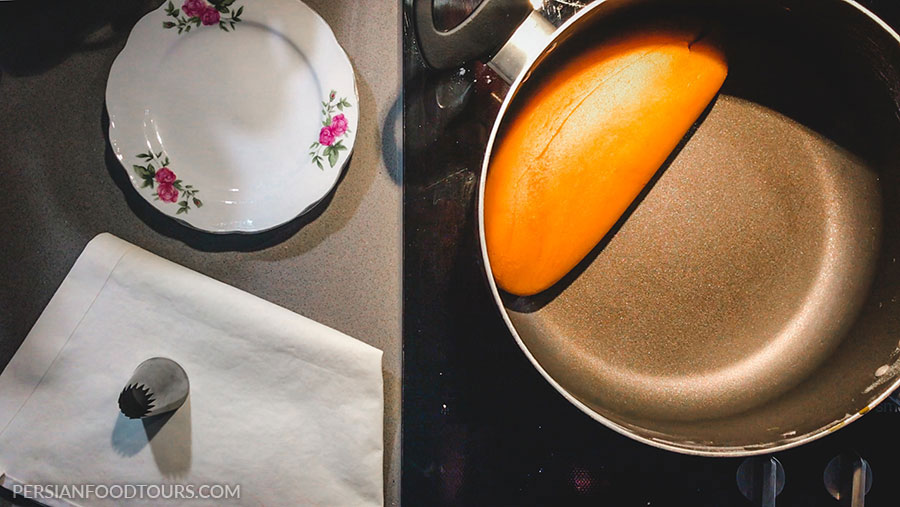
Persians always garnish the Halva with raw unsalted pistachios (powdered or chopped). Almonds and dried rose petals are definitely as part of the garnish too.
No matter the occasion Iranians serve Halva with a cup of brewed black tea.
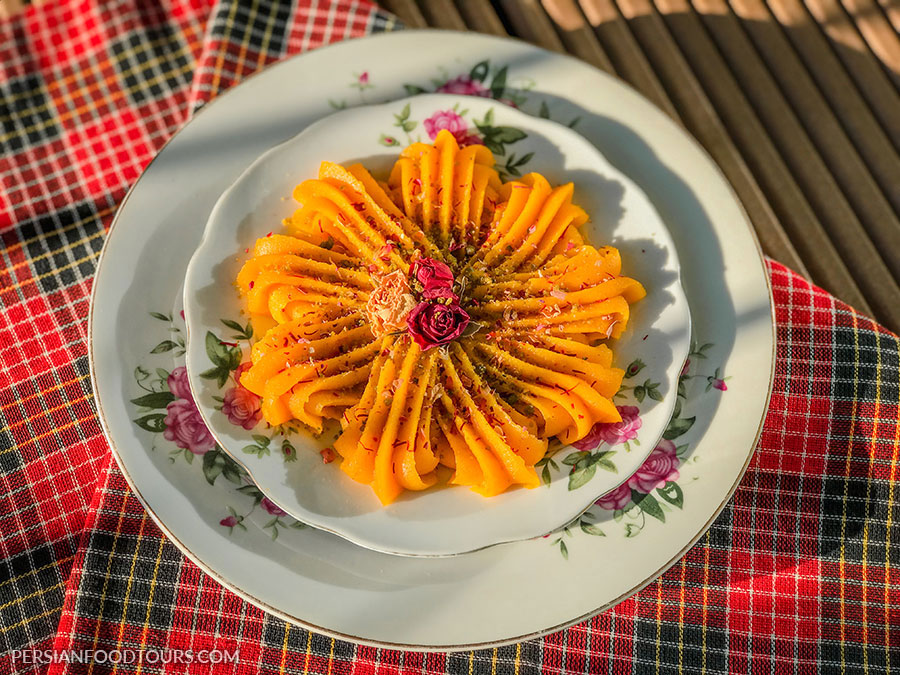
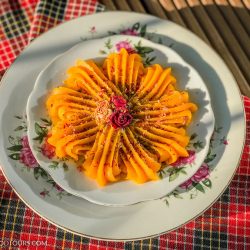
Persian Halva
Ingredients
Syrup
- 250 ml water
- 170 g white caster sugar
- 100 ml rosewater
- 1 tsp cardamom
- 2 tsp Bloomed saffron
Halva
- 150 g plain wheat flour sifted
- 80 g vegetable oil
- 20 g butter
Garnish
- Rosepetals
- almmonds chopped
- pistachios chopped
Instructions
- Combine sugar and water in a medium saucepan and bring to a gentle boil, Add the saffron, cardamom and the rosewater remove from the heat and set aside to cool.
- Place a heavy-bottom pan over medium-low heat and lightly toast the wheat flour for 10-15 minutes, until you smell the toasted aroma. Stirring frequently as the flour burns quickly and makes an unpleasant taste. Flour should slightly change change colour.
- Sieve the flour to smooth out any lumps before adding the oil and butter.
- Mix in the oil and butter ,stir continuously for about 10 minutes over low heat.
- While stirring, gradually pour the sugar syrup into the saucepan using a ladle, until the syrup is fully absorbed and well combined.
- Keep stirring until the Halva starts pulling away from the bottom and sides of the pan and comes together as a smooth dough.
- Transfer it to a shallow serving platter and smooth out the top with the back of a slightly oily spoon.
- Garnish as you desire with almonds, pistachios and rose petals and serve with Persian black tea.
Notes
- The syrup should be lukewarm when adding to the Halva.
- Once the Halva as cooked you can transfer it into a piping bag and pipe it out on to a serving plater or in mini croustade.
- Serve Halva at room temperature with a cup of black tea.
- You can cover Halva with cling film and store it in the fridge.
- Is best to consume Halva within a cupel of days.


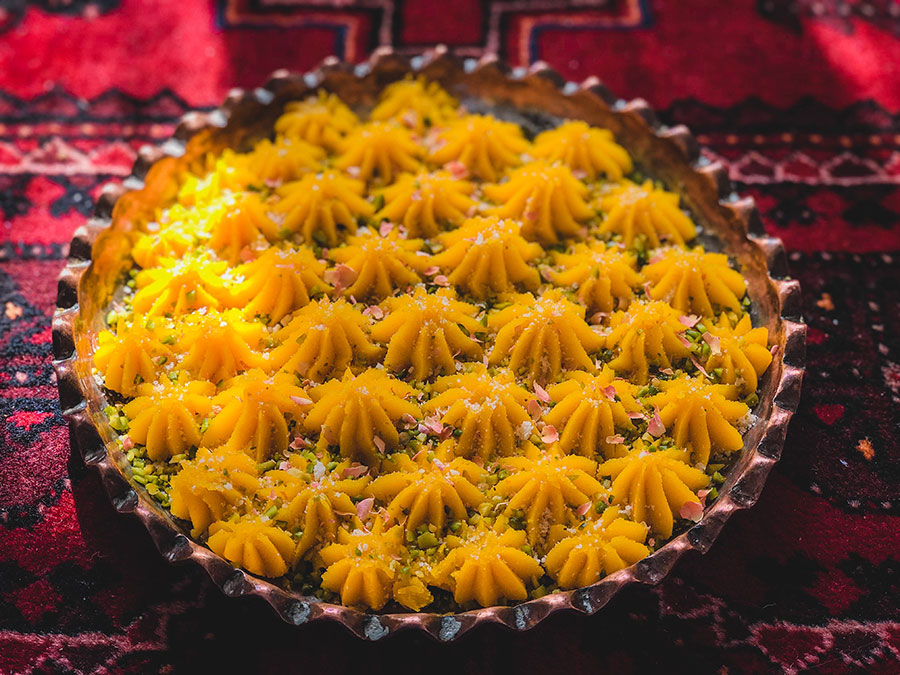


Customer
I love to have good food. You both are doing a great job. I am enjoying it. Thank You from my heart!!
Customer
Love Halva
Customer
Such beautiful presentation!
I never thought to pipe halva.